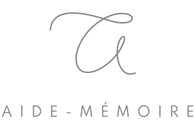
Our standard diamond options are natural lab-grown diamonds, Diamond Foundry lab-grown diamonds, or recycled natural diamonds. We will also work with Canadian or Australian diamonds upon request. Re-setting family heirloom diamonds is also an option.
White diamonds over .50ct generally come with a grading certificate. Diamonds between .25ct and .50ct will occasionally come with a grading certificate, but not always. On our listings, mm sizes and carat weights are approximate and depend on actual diamond availability.
Our approach to diamond buying is to get the best available stone within your budget and prioritizing the elements that affect the way the diamond looks in real life, not in a laboratory. Our standard options have a minimum of SI clarity, very good cut, and H in color, though we shoot for higher on all those factors. We prioritize the cut first when selecting a diamond since that is the factor that most contributes to the sparkle of a diamond. We try for excellent or ideal cuts whenever possible. Then we look at color and clarity.
In the rare case that there is no diamond currently available within your budget that meets our minimum standards, we will contact you about alternatives like a more extended timeline or a reduction in price and quality.
Carat is typically the starting place. Carat will determine how big a stone is though carat denotes weight, not the size of a diamond. At Aide-memoire, we usually talk about stones by their size because that is what you see when you look at it (size not weight).
Cut
The cut is the most essential factor to consider with diamonds since that primarily gives a diamond its sparkle and fire. When choosing a diamond, we prioritize cut over color and clarity to find the prettiest diamond in your budget.
Color
Color is the second most important factor to consider. For color, diamonds in the D-H range will not appear as yellow to the naked eye. Some diamonds have fluorescence, which means they emit light under UV light. Typically this color is blue. Diamonds with fluorescence generally are less expensive than the same quality diamond without fluorescence. However, a slight fluorescence in a more yellow diamond can neutralize a bit of the yellow color and can be desirable for a more budget-friendly diamond.
Blue Diamonds
The lab-grown blue diamonds are a pale blue in the smaller sizes whereas the color is more saturated in the larger sizes. These diamonds are available in sizes 1mm-4mm.
Looking for more info? Check out our FAQ database.
